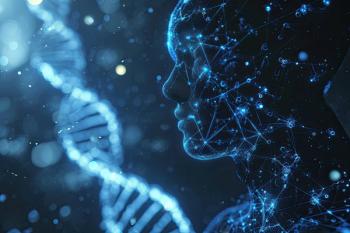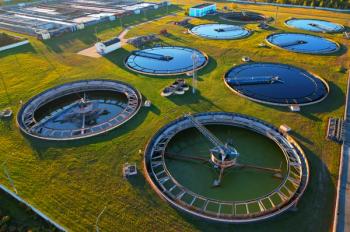
Best of the Week: Paul Ferguson Specially Appointed a Professor, Studying Cyclodextrins, Characterizing Polyamides
Here is some of the most popular content posted on LCGC International this week.
This week, LCGC International published a variety of articles on trending topics in separation science, including Paul Ferguson being named a University of Amsterdam professor and characterizing polyamides, or nylons, using reversed-phase liquid chromatography. Below, we’ve highlighted some of the most popular articles that were published this week.
We’d love to hear from you! Is there a topic you’d like to see covered in LCGC? Share your ideas with us—we value your feedback and are committed to exploring the subjects that matter most to our readers. Email
Kate Jones
LCGC International Editorial Advisory Board (EAB) member Paul Ferguson has been named a professor by special appointment at the Faculty of Science at the University of Amsterdam, based in The Netherlands. His new position, focused on "Separation of Biomacromolecules with a Special Emphasis on Sustainable Analytical Science," is housed within the Van 't Hoff Institute for Molecular Sciences (HIMS) in Amsterdam, and is supported by the Bèta Plus foundation. Ferguson, who currently serves as a principal scientist at AstraZeneca, will focus on developing new tools and methods to promote sustainability in the analytical sciences, an area of growing importance in both academic and industrial research settings.
John Chasse
Cyclodextrins (CDs) are significant in macrocyclic science, especially because of their chiral carbohydrate structure and ability to form inclusion complexes. A recent research article authored by scientists from the University of Texas at Arlington, Northwestern University, the University of Hong Kong, and the life science tools company BioTools, Inc. (Jupiter, Florida) discusses recent advances in CD research. LCGC International recently spoke to one of the authors, Saba Aslani of the University of Texas at Arlington, about the the team’s findings and main takeaways.
Aaron Acevedo
Polyamides (PAs), commonly known as nylons, are characterized by having amide groups, or (CO–NH), in their main polymer chains. These compounds are used in many aspects of everyday life, including industries like textiles and engineering materials. To relate the chemical structure of these substances to their physical properties, it is important to have appropriate polymer-characterization techniques available. In this recent study conducted by researchers from Vrije Universiteit Amsterdam, external PhD candidate Jordy Kruijswojk and the team studied how semi-crystalline polyamides (PAs) react when undergoing reversed-phase liquid chromatography (RPLC).
John Chasse
Although metabolic alterations in human lipidome significantly impact various chronic diseases including type 2 diabetes (T2D), epidemiology and clinical studies have yet to identify clinically meaningful lipid markers for T2D. Although fatty acids (FAs) are the backbone of lipid species, conflicting results on the essential FAs (including omega 3 and omega 6) in the development of metabolic diseases require deeper evaluations of diverse clinical cohorts, including underrepresented populations. A joint study between the University of Oklahoma Health Sciences Center (Oklahoma City, Oklahoma) and the UC Davis West Coast Metabolomics Center (Davis, California) published in the Journal of Lipid Research investigated the lipidomic profiles of 3000 individuals from a well-characterized cohort from North India. Untargeted lipidomic profiles were created using blood samples applying reversed-phase liquid chromatography-accurate mass tandem mass spectrometry (RPLC-accurate MS/MS).
Aaron Acevedo
Bacteriophages are viruses that infect and replicate in bacterial cells. They are believed to be Earth’s most abundant biological agent, being diverse in size, morphology, and genomic organization. They are used in various applications, most notably in treating bacterial infections. This is especially important in giving the rise in antibiotic-resistant bacteria. Misuse of antibiotics may lead to a post-antibiotic era, where minor wounds and infections can have the potential to be fatal. Researchers from the University of Lisbon in Lisbon, Portugal recently created a new purification workflow for handling bacteriophages.
Newsletter
Join the global community of analytical scientists who trust LCGC for insights on the latest techniques, trends, and expert solutions in chromatography.





